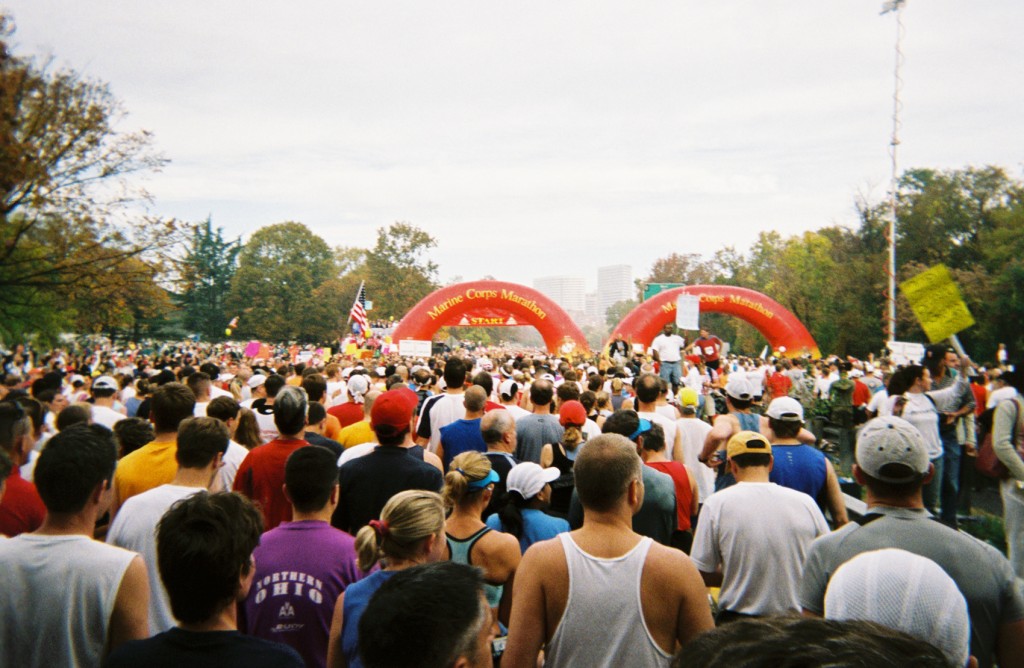 |
| Although the MCM had always been a favorite, I had not run it for six years. I was pleased to see that it was as popular as ever. At the start, the runners crammed onto the Jefferson Davis Highway, just at the base of the Iwo Jima Memorial in Arlington. |
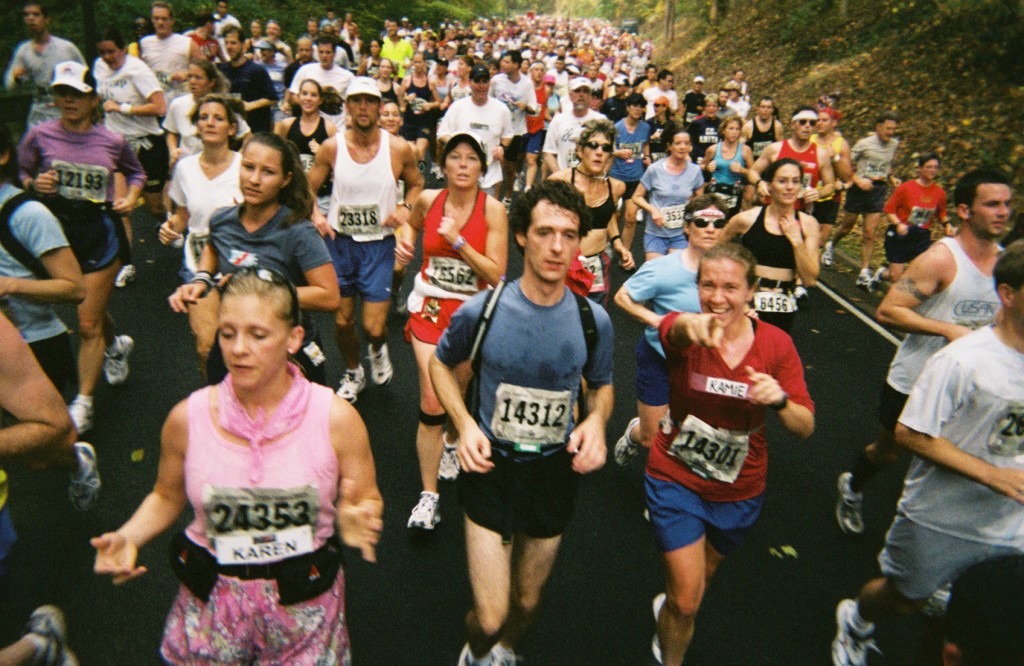 |
| One of the most pleasant surprises was the discovery that the organizers had done some major alterations in the marathon route. For years, runners had started the race by running south, not north, on Jefferson Davis Highway and then looping around the Pentagon through the some fairly nondescript areas around Crystal City. By taking us north, through downtown Rosslyn, and then east on Lee Highway, the race now treats the marathoners to the cool and leafy downhill at Spout Run. For most of a marathon, all you see are the backs of the people in front of you, so I took advantage of the downhill and just turned my camera around, lifted it over my head, and clicked. It came out surprisingly well, and at least one runner — Ramie, #14301 — seemed to get a kick out of having her picture taken. |
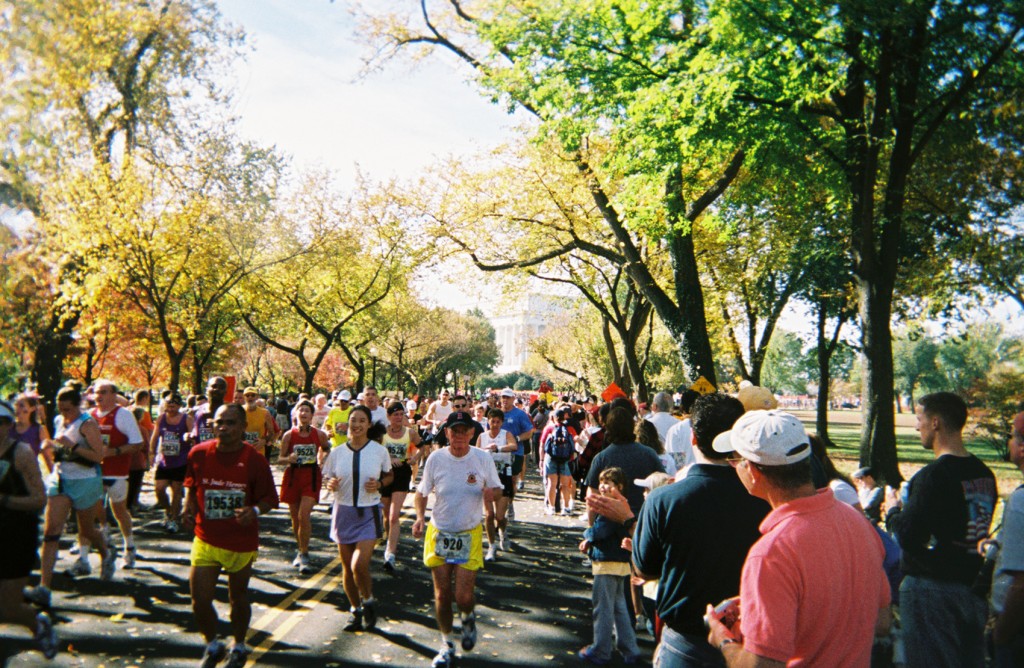 |
| The short stretch of the race that runs from the end of the Rock Creek Parkway at Memorial Bridge, past the Lincoln Memorial and north to Constitution Avenue offers some enjoyable fall foliage and the first real sustained concentration of spectators to cheer the runners on. |
 |
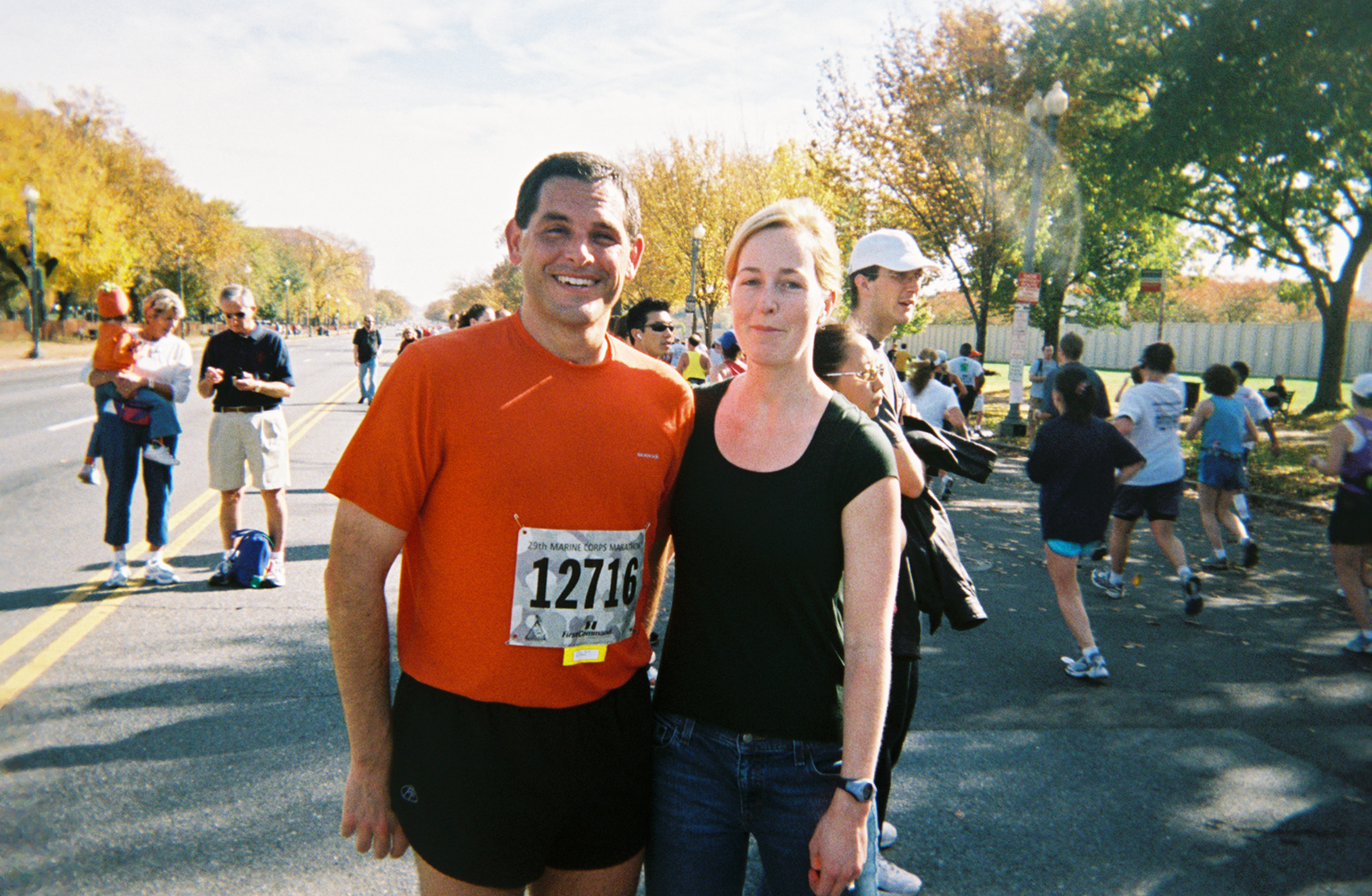 |
| Sarah Kelly was one of the most talented students I’ve ever encountered. After graduating from UNC, she went off to the University of Michigan Law School and then took a job in Washington. She took time out of her busy life as a law firm associate to lend support. |
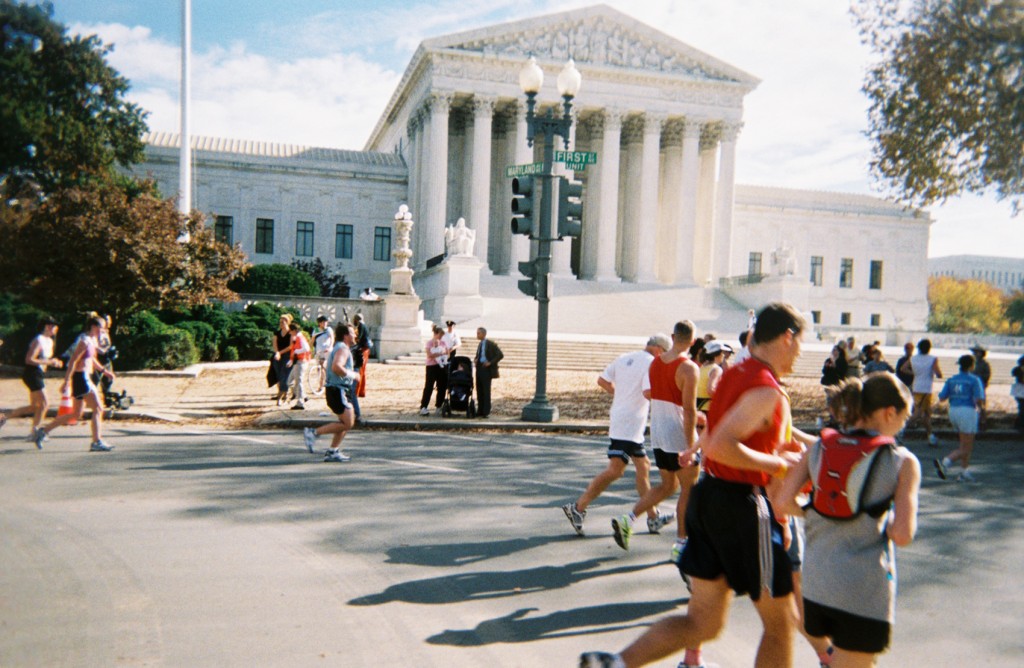 |
| At the half-way point, the marathon passes by the Supreme Court, where the one active runner among the justices, David Souter, came out to watch the marathon. He’s hard to make out, but that’s him in the center of the photograph, standing just to the left of the traffic light. |
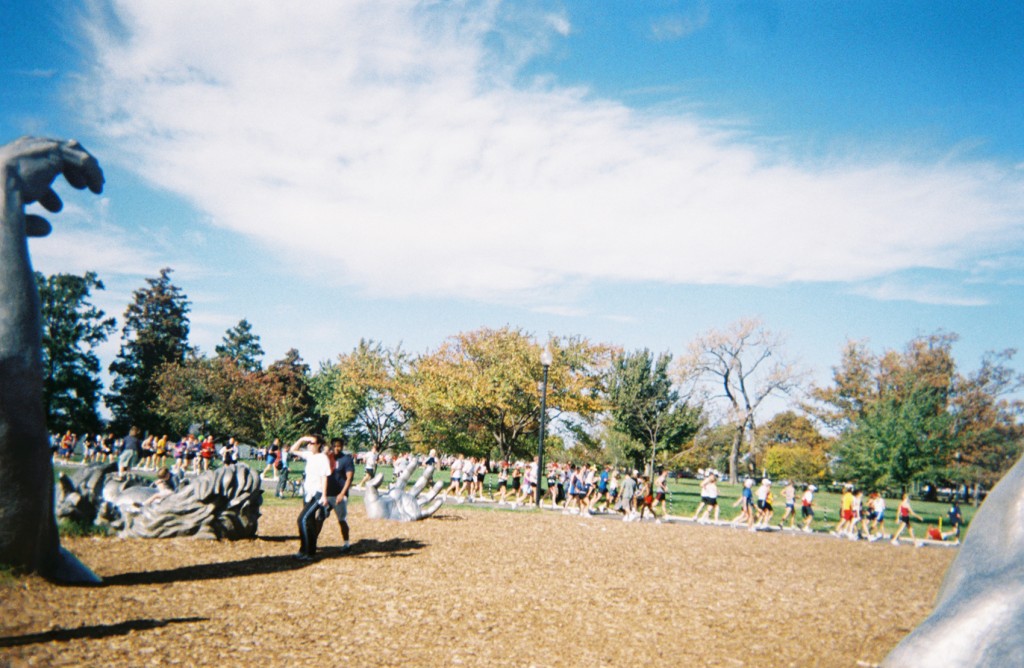 |
| One of the least known but most stunning pieces of art in Washington is Seward Johnson’s “The Awakening,” which is located at the southernmost tip of Hains Point. Running to the end of Hains Point and back is one of the loneliest segments of the marathon, but getting the chance to view this enormous sculpture of a bearded man arising from the earth is something to look forward to. When the runners reach this point, they turn and head back north for the final miles of the race. |
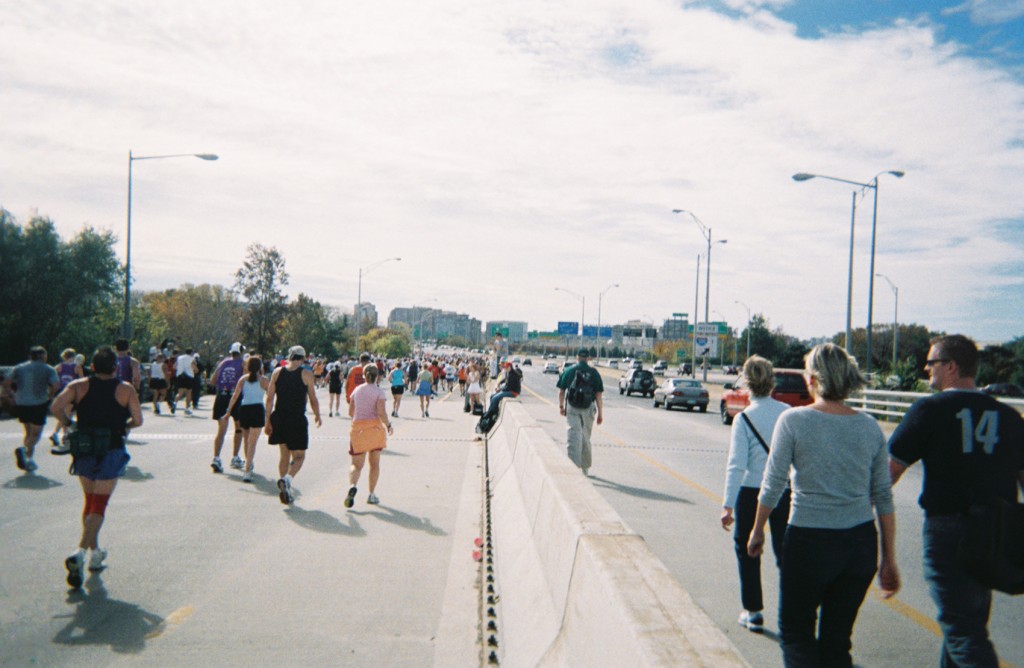 |
| The 14th Street Bridge is a psychological no-man’s land. There are few spectators to offer encouragement to the runners and more importantly no landmarks to mark one’s progress. It stretches on, seemingly forever, and induces the feeling of running on a treadmill. This ends up being one of the most mentally challenging segments of the Marine Corps, and because it comes late in the race when most runners are seriously fatigued, a good many marathoners are reduced to walking. |
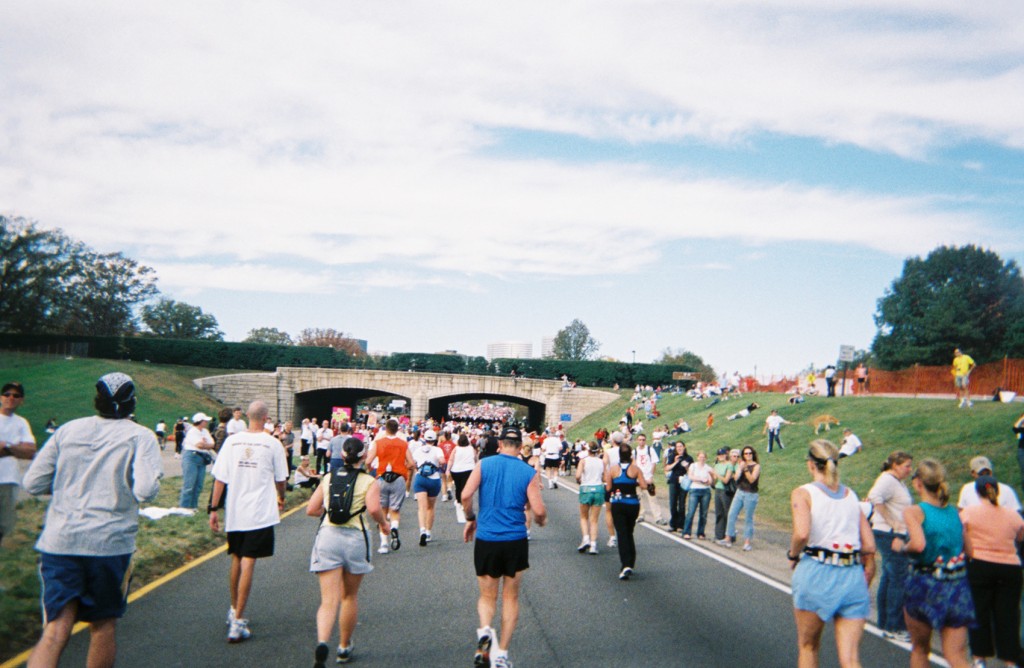 |
| This race has always had a reputation for being especially friendly to first-time marathoners. That reputation, I think, comes largely from the stellar job that the Marines do in organizing the event; they are uniformly friendly, courteous, and supportive. I don’t know if the Marines use this race as a recruiting tool, but they certainly should, since many people come away from the experience with an inclination to enlist. The reputation probably does not stem from the course, however. Exhibit A is the finish, which is pretty punishing. The final stretch, shown above, begins flat and then heads uphill, gradually getting steeper and steeper. In previous years, marathoners had to run the entire corkscrew road that winds endlessly to the top of the hill to the Iowa Jima Memorial. Mercifully, the Marines have moved the finish line down the hill a good bit, but reaching it still requires a good head of steam. |
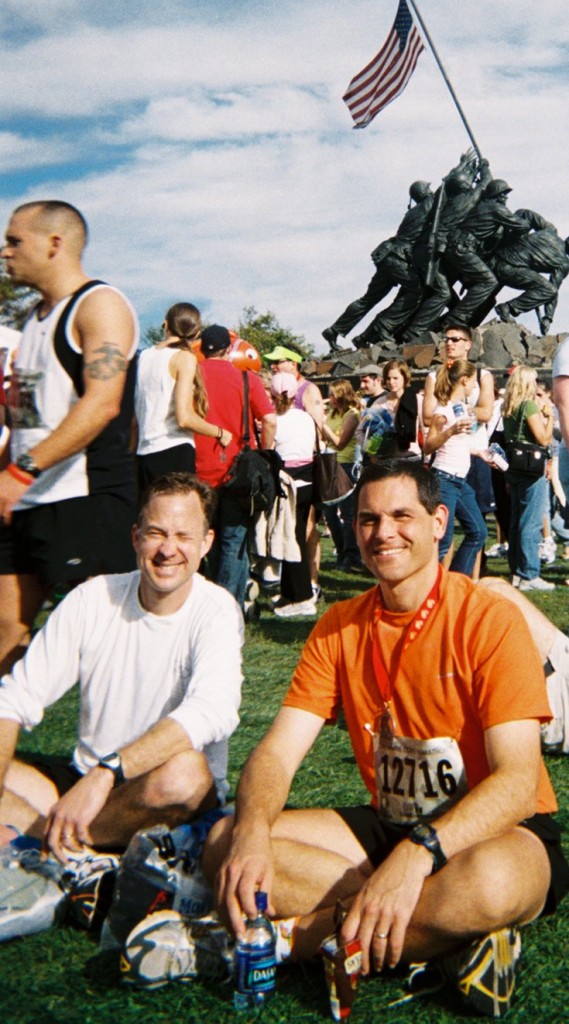 |
| I ran this year with my brother-in-law Michael Eackles — at least for the first couple of miles. He had trained pretty seriously, and I hadn’t, and so he quickly left me trailing behind. I didn’t see him again until I crossed the finish line. |